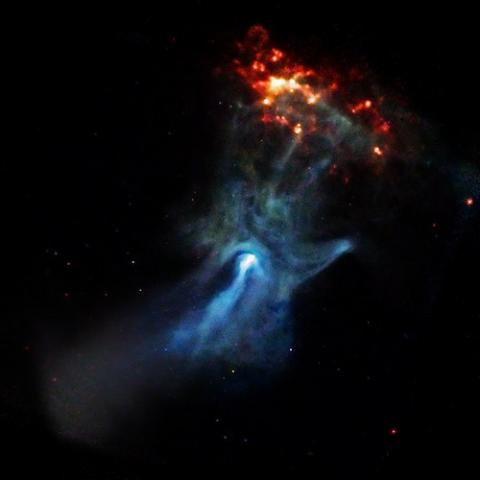Checking for a pulse in Irish science

The Centre for Astronomy at NUI Galway is leading the way in the study of pulsars, another example of Ireland’s strong position in the global scientific community, writes John Holden.
“I ofen looked up at the sky an' assed meself the question - what is the moon, what is the stars?” Captain Boyle of the Sean O’Casey play, Juno and the Paycock, asked the question scientists are still trying to answer. And while Ireland’s reputation for serious scientific endeavour is all too often thought to amount to no more than Captain Boyle’s enquiry, the reality is anything but.
It has just been reported that Ireland is now number 20 in the world in terms of published international scientific research, on a par with France and Australia. So our knowledge of the stars is getting better and brighter.
Not least in the area of neutron star pulsars. The NUI Galway Centre for Astronomy have discovered optical pulsations from two out of the five known optical pulsars in the entire galaxy.
Pulsars are highly magnetically charged revolving neutron stars that emit rays of electromagnetic radiation. These beams of light can only be seen when the emission is pointing in the earth’s direction. This is sometimes referred to as the ‘lighthouse effect’ and causes their pulsing appearance: hence the name, pulsars.
At the NUI Galway Centre for Astronomy, scientists look at these phenomena in detail. “Essentially we observe pulsars simultaneously using large radio telescopes abroad and with our own instruments on large optical telescopes. From this we hope to be able to understand how pulsars work through mapping out the strong magnetic field around them.”
Along with their own equipment, the Centre for Astronomy in Galway uses data collected at some of the biggest astronomy observatories in the world: the Jodrell Bank Observatory in the UK, the Westerbork Array in the Netherlands, and the William Herschel Telescope in the Canary Islands. This means they have access to some of the most up-to-date information available worldwide.
“A pulsar is the end product of the evolution of a star which was formed after a supernova, which temporarily outshines all other stars,” says Shearer. “During a supernova explosion all heavy metals, such as gold, are formed. This is one of the reasons why gold is so expensive.”
“We’re involved in the study of neutron stars when they appear as pulsars. A few of the older neutron stars (sometimes known as ‘brown dwarves’ or ‘failed stars’) also give a flash of optical light. We only know of five of them in the galaxy and we discovered two of them here at my department.”
While it’s less surprising to hear about successful Irish research into R&D-driven, commercially focussed science, this type of research rarely enjoys the limelight in the Irish media. But it is becoming more and more commonplace.
“We need to be able to examine such phenomena in as much detail as we can because they are an example of matter at its most extreme – high densities, high magnetic fields and high temperatures,” stresses Shearer. “In order to understand the physics of matter you need to push it to the extreme.”
Image top: NASA's Marshall Space Flight Centre.
